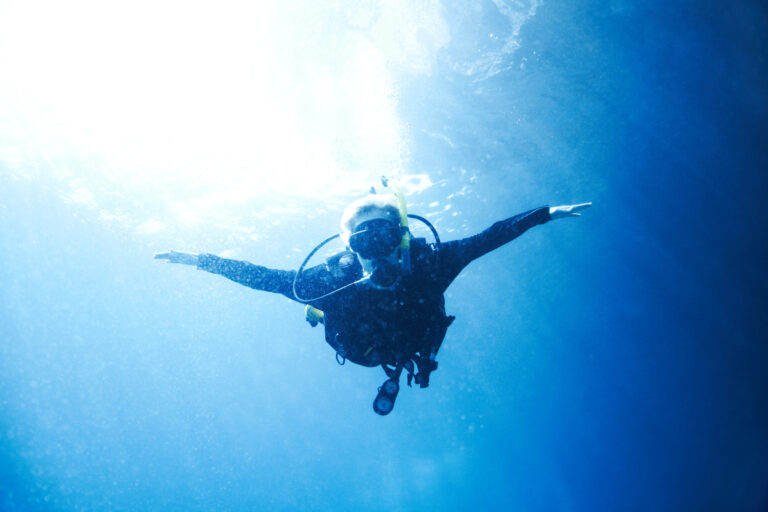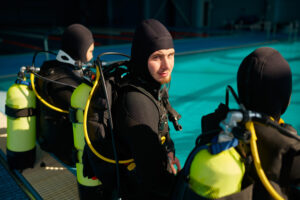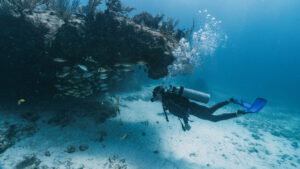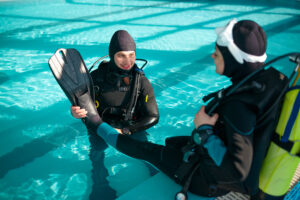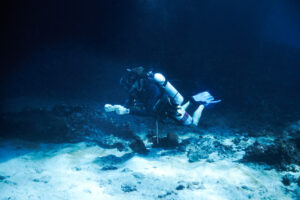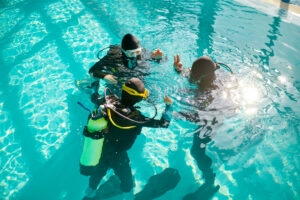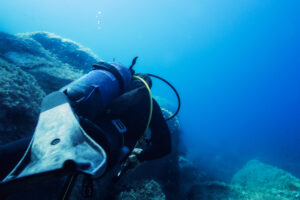What is it to Turn the Dive?
Turn the Dive is a crucial scuba diving concept that dictates the moment when divers must initiate their return journey during a dive. It is a vital safety measure that helps divers manage their time, depth, gas supply, and distance effectively, ensuring a controlled and enjoyable underwater experience. In this entry, we will explore the importance of turning the dive, the various factors that influence it, and the methods used to calculate and execute this essential procedure.
THE IMPORTANCE OF TURNING THE DIVE
Turning the dive is a key practice in scuba diving, as it ensures that divers have adequate time and resources to return to the surface safely. By adhering to the turning point, divers minimize the risk of decompression sickness, running out of breathing gas, and other potential hazards. Moreover, this practice helps to conserve marine life and habitats by promoting responsible diving behavior. Factors Influencing Turning the Dive:
DEPTH
Depth plays a significant role in determining when to turn a dive, as it directly impacts the amount of breathing gas used and the risk of decompression sickness. Divers should adhere to their planned depth limits and the no-decompression limits (NDL) to avoid complications.
TIME
Time is another crucial factor, as staying underwater for extended periods increases the risk of decompression sickness and gas depletion. Divers should always abide by their dive plan and adhere to the established bottom time.
GAS SUPPLY
Gas management is vital for a safe dive. The rule of thirds is a popular method for determining when to turn the dive based on gas supply, which dictates that divers should use one-third of their gas supply for the outward journey, one-third for the return, and reserve the final third for emergencies.
DISTANCE
The distance covered during a dive impacts the time and energy required to return to the starting point. Divers should take into account their physical fitness, experience, and environmental conditions when planning their dive to ensure a safe and enjoyable experience.
CALCULATING THE TURNING POINT
Several methods can be used to calculate the turning point for a dive, with the most common being:
RULE OF THIRDS
As previously mentioned, this rule allocates one-third of the gas supply for the outward journey, one-third for the return, and reserves the final third for emergencies. Divers can track their gas consumption using submersible pressure gauges (SPGs) or dive computers.
SURFACE AIR CONSUMPTION RATE (SAC)
This method involves calculating a diver’s gas consumption rate at the surface and using it to determine the turning point based on the available gas supply. The SAC rate is typically measured in liters per minute (L/min) or cubic feet per minute (ft³/min).
ROCK BOTTOM GAS MANAGEMENT
This approach involves calculating the minimum gas reserve required to safely ascend from the planned maximum depth. The reserve includes the gas needed for a controlled ascent, a safety stop, and an additional buffer for emergencies.
EXECUTING THE TURN
Once the turning point has been determined, divers should:
- Signal their buddy or dive group to communicate the need to turn the dive. Common hand signals include making a “U” shape with the thumb and index finger or showing an “OK” sign followed by a thumbs-up.
- Orient themselves with their compass, landmarks, or natural navigation aids to determine the direction of their return route.
- Ensure that their buoyancy is properly adjusted for a smooth, controlled ascent and return.
- Continuously monitor their gas supply, depth, and time throughout the return journey to ensure they remain within safe limits.
- Observe their surroundings and maintain situational awareness to avoid potential hazards and protect the marine environment.
Key Takeaways
Turning the dive is an essential safety practice in scuba diving, involving the careful management of depth, time, gas supply, and distance to ensure a controlled and enjoyable underwater experience. By adhering to the turning point, divers minimize potential risks and promote responsible diving behavior that safeguards both themselves and the marine environment.
To successfully turn the dive, divers must have a thorough understanding of the various factors influencing the turning point, as well as the ability to calculate and execute the turn effectively. This involves mastering techniques such as the rule of thirds, SAC rate, and rock bottom gas management, as well as maintaining clear communication and situational awareness throughout the dive.
Proper training, experience, and adherence to established dive plans are crucial for divers to implement the turning point effectively. In addition, divers should always be prepared to adapt their plans to changing environmental conditions, equipment issues, or diver health concerns. By doing so, they can ensure a safe and memorable diving experience for themselves and their dive buddies.
Turning the dive is a fundamental aspect of scuba diving safety that every diver must be well-versed in. As an essential practice, it plays a critical role in managing risk and promoting sustainable, responsible diving practices. By mastering the techniques and considerations associated with turning the dive, divers can confidently explore the underwater world while ensuring their safety and the preservation of the marine ecosystems they encounter.

